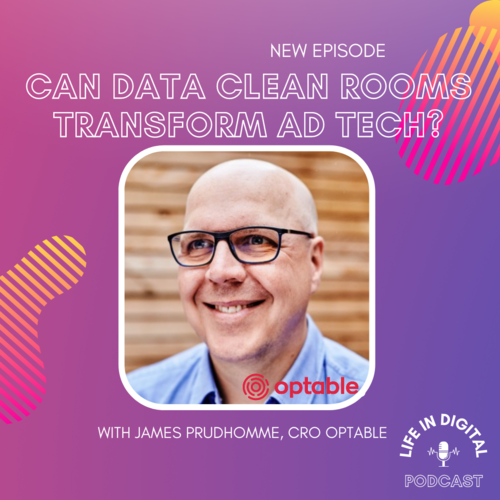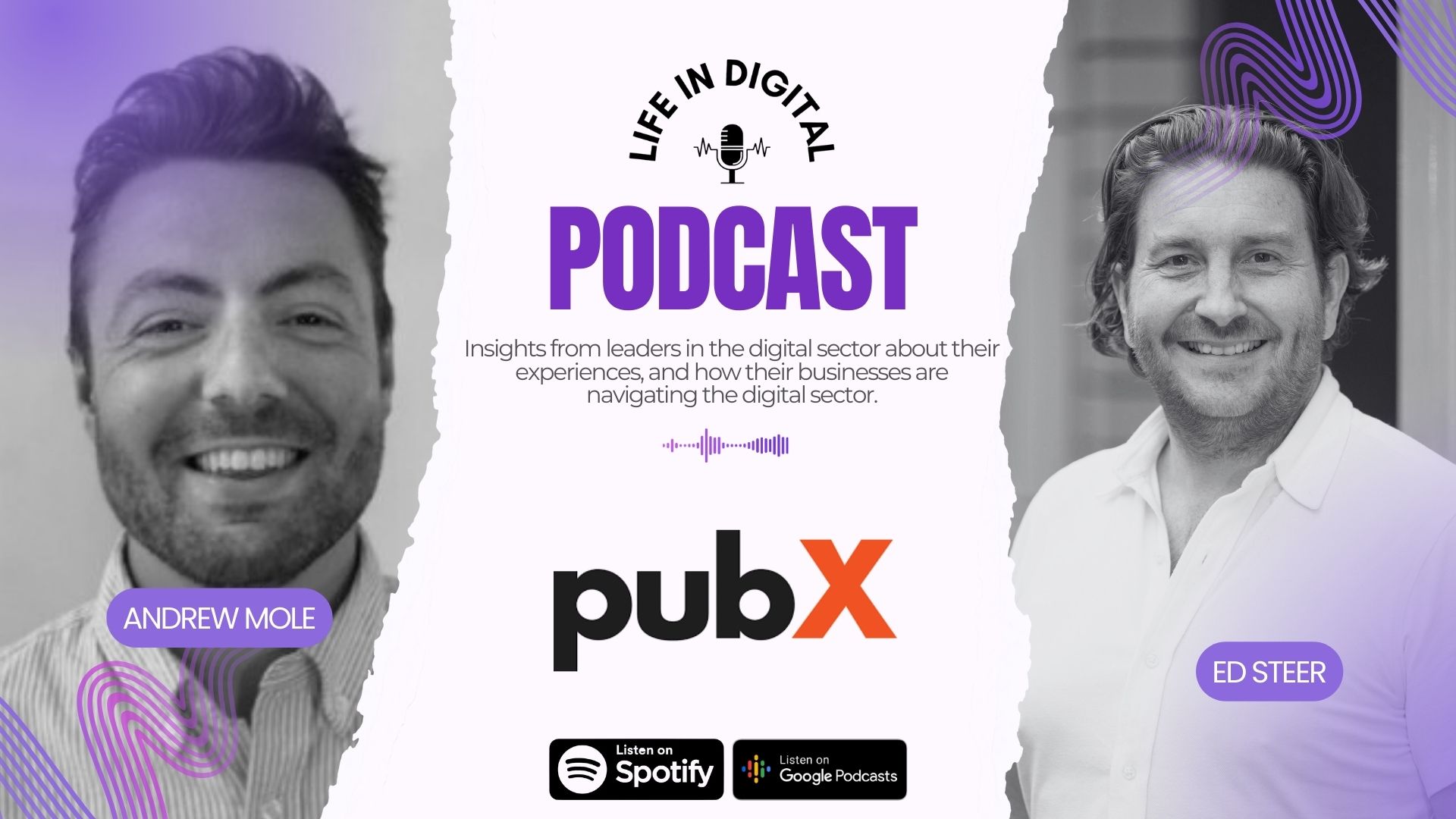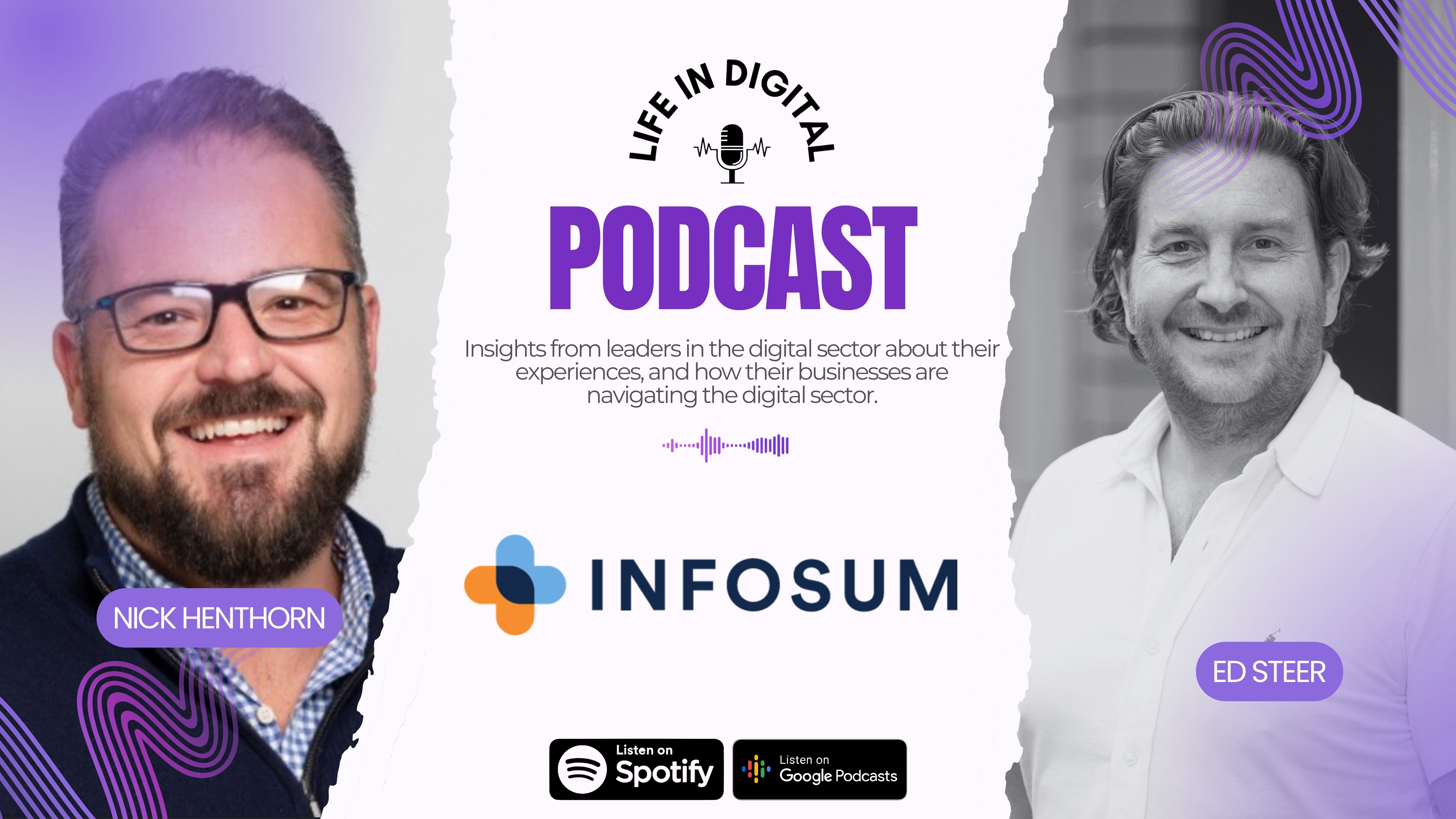How data clean rooms are transforming the ad tech industry
James Prudhomme, CRO at Optable, joins Ed on this week’s episode of our Life in Digital Podcast. James goes into detail about the emergence of data clean rooms in the Ad Tech industry and how this platform creates a secure and legislatively compliant space for companies who are tackling the loss of third-party cookies.
Data clean rooms are seen by many as one of the cornerstones of the post-cookie digital advertising ecosystem.
How Optable’s platform accommodates the loss of third-party cookies
During a time where the Ad Tech industry has been disrupted due to cookies being banished and new legislations strengthening the protection of consumer data.
It has ultimately forced brands and publishers to explore new ways of making use of their data sets without compromising consumer data privacy.
Optable is a new breed of data and collaboration platform that allows two companies to collaborate using their first party data in a way that is safe and secure, and compliant with GDPR legislations.
There are two forces at play that have introduced data clean rooms into the Ad Tech world:
- The demise of third-party cookies, the traditional method that glued various data sets to the Ad Tech ecosystem being taken away.
- Legislatively, governments around the world are becoming more and more serious about data protection and empowering the consumers.
So, what are Data Clean rooms?
Data clean rooms are produced by two companies (could be a brand or publisher) that own first party data and want to collaborate using that data which is compliant with the current legislation, and which is safe and prevents data leakages.
What makes data clean rooms a highly credible platform is the fact that access, availability, and usage of data are agreed upon by all data clean room parties, while data governance is enforced by the trusted data clean room provider (AppsFlyer, 2022).
James mentions that,
“Data clean rooms have emerged as a solution to enable a collaboration between two sets of first party data that is secure and compliant with legislation”.
The clean room approach favours all parties as there are three fundamental aspects which allows this new platform to bring opportunity for brands and publishers and can build on consumers trust due to how secure the platform is when combining data sets.
Cryptography is used to make sure data is secured and unreadable except from the party that has a cryptographic key. This allows partners to safely compare data in such a way that data is prevented from being leaked.
James explains how cryptography has its benefits in tackling consumer privacy.
“Both data sets would be cryptographically secured and Optable’s system would still allow that comparison to happen to understand the overlap between the data sets without unencrypting the data and allowing both parties from seeing each other’s data.”
ID-agnosticism is used instead of a centralised ID which is why clean rooms are built for the fragmented world in which everyone operates their own identity graph.
With the use of differential privacy, allows the platform to describe the patterns of groups in data sets without disclosing information about individuals and therefore ensures that it cannot be used to triangulate on one specific person.
What is the future of data clean rooms?
Optable’s platform was created to support custodians of first party data which could be for a brand or publisher. With this it can be expected that over time as clean rooms are embedded into a wider variety of platforms, it can become more interoperable and pervasive. This will ultimately allow marketers to turbo-charge any first-party data strategy.
We have only covered snippets of the content that came out of James’s and Ed’s discussion on our latest episode of the Life in Digital Podcast. To listen to the episode in full, click the link here:
Links to sources
Brands are Flying Blind in CTV – Data Clean Rooms Allow Them to See – VideoWeek






